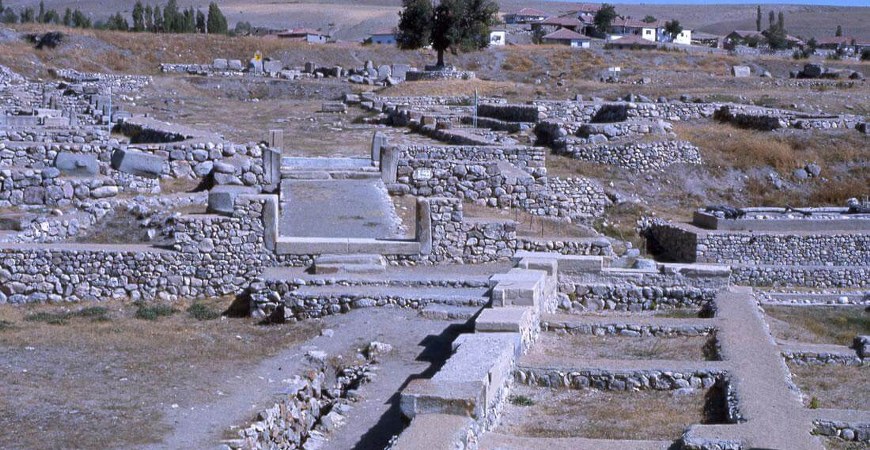Alacahoyuk Treasures Hattusa Corum in Turkey – Chapter 3,
However illness prevented him from completing his journey to Alacahoyuk and in his place, he sent the Minister of Education Safvet Arikan, the Chairman of the Turkish Historical Association Semseddin Gunaltay, Professor Afet Inan and Professor Hikmet Bayur. This delegation returned to Ankara with the treasure found at Alacahoyuk. Ataturk was pleased and proud to see it on his desk in the presidential residence in Cankaya. The first important findings of the excavations which he had ordered were in front of him. He decided that a Faculty of Language History and Geography should be opened in Ankara to train history and language specialists and that more extensive excavations should be carried out. After a short time, the Faculty opened in Ankara on January 9, 1936. The Alacahoyuk findings were given to the Eti Museum which was opened on Ataturk’s orders and which is the present Museum of Anatolian Civilisations. Ataturk launched a triumphant period for Turkish history and archaeology. With the work of Turkish scientists and curators, an enlightened scientific period began in which great achievements were made.
Today the findings of Alacahoyuk are displayed among the masterpieces exhibited at the Museum of Anatolian Civilisations in Ankara. Among these gold works which were death presents laid in the graves of kings and princes in Alacahoyuk are a gold ewer, a gold cup, gold necklaces and brooches, a gold sword hilt, and bronze sun discs and tags. These are genuine works of art made before the Hittites in the Early Bronze Age. Experts estimated that they were made 2400 to 2300 years before Christ. At this period various metals had been discovered by the people of Anatolia. Copper, lead, tin, gold, silver and various alloys such as bronze and electron were used to make ornaments etc. The pottery pitchers, footed fruit bowls, teapots fitted with strainers, vases, and bowls were decorated with geometric designs. The excavations which were begun in 1935 at Alacahoyuk are still continuing today and the findings sent to the Ankara Museum of Anatolian Civilisations.



































































































































